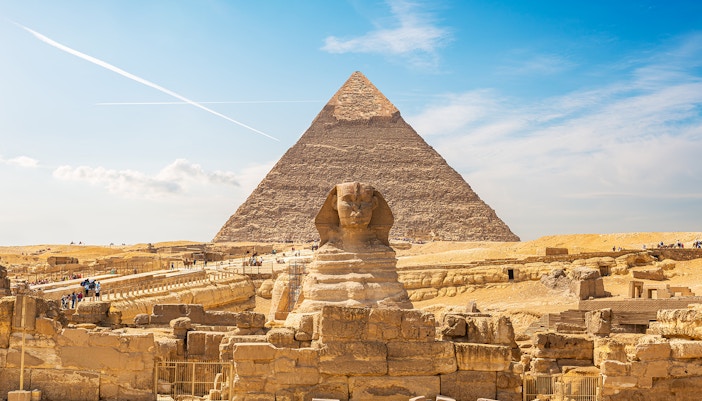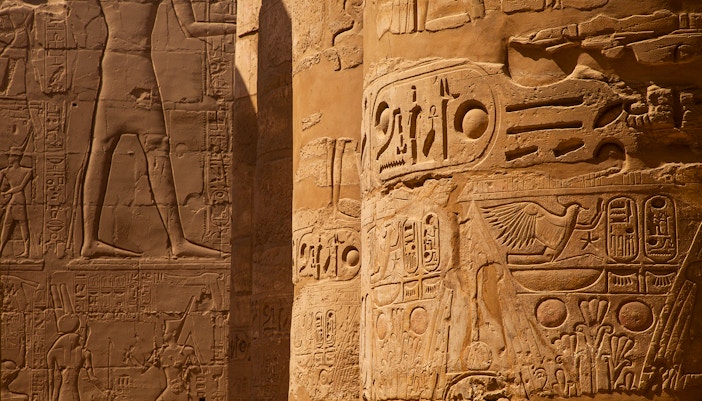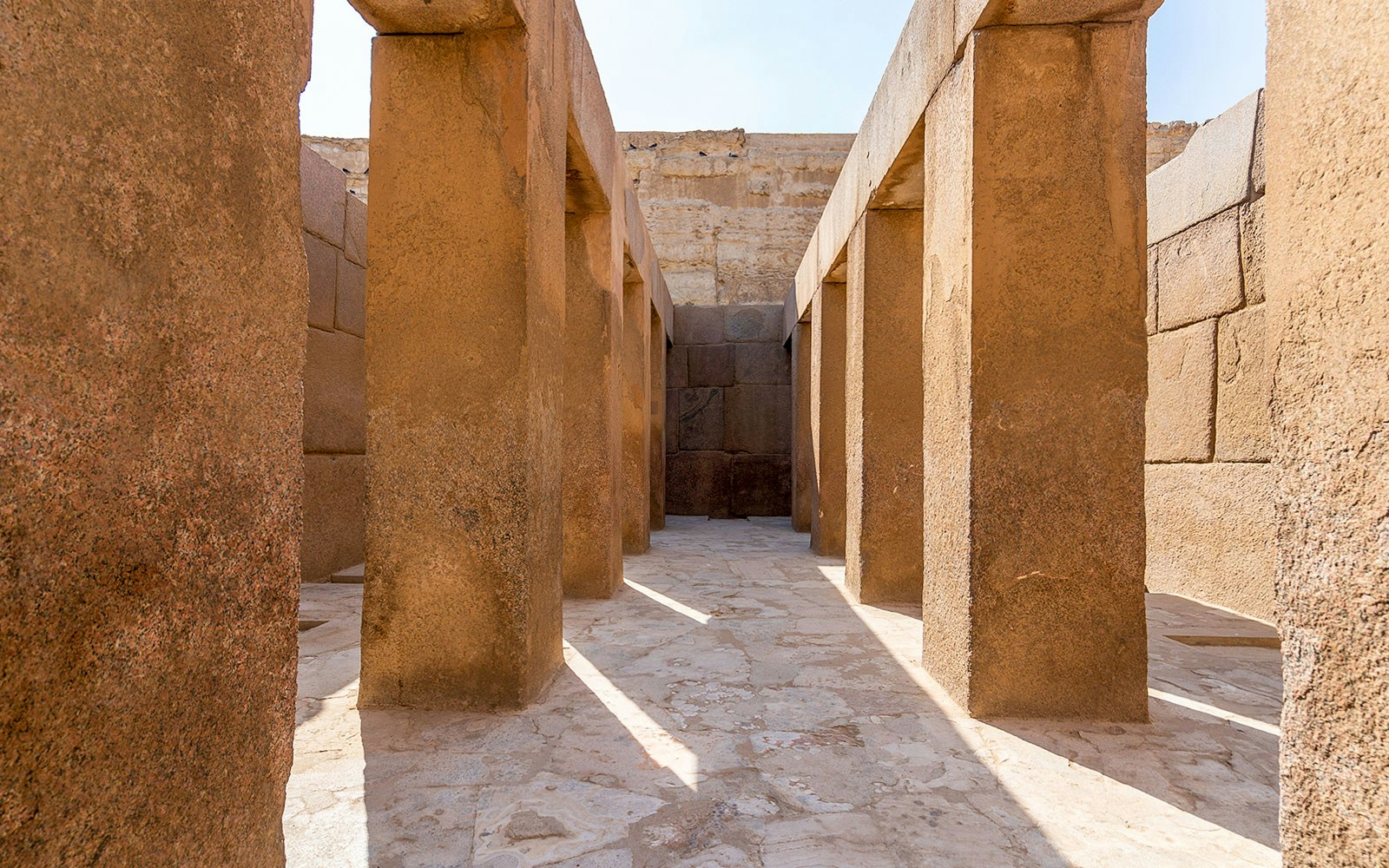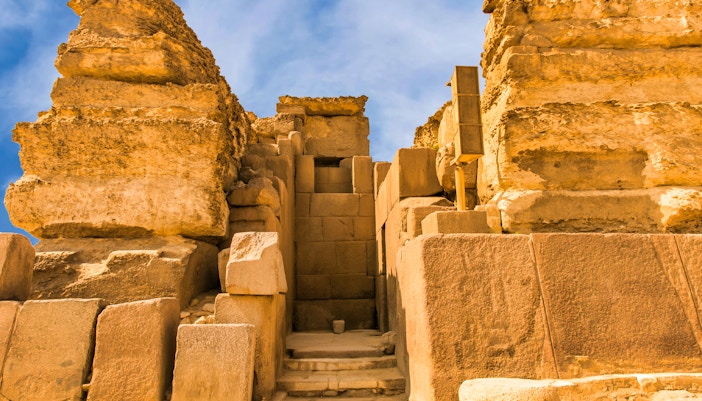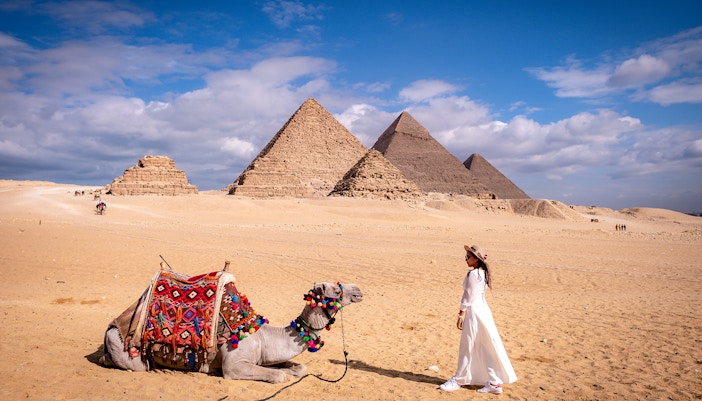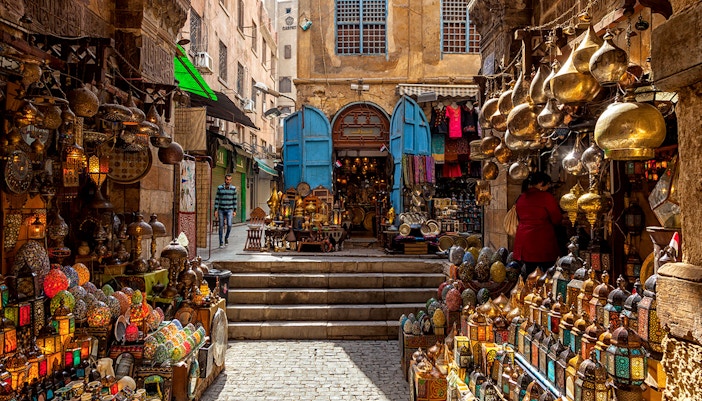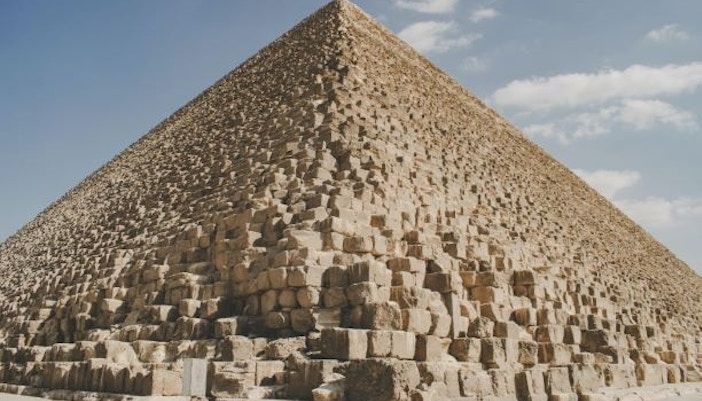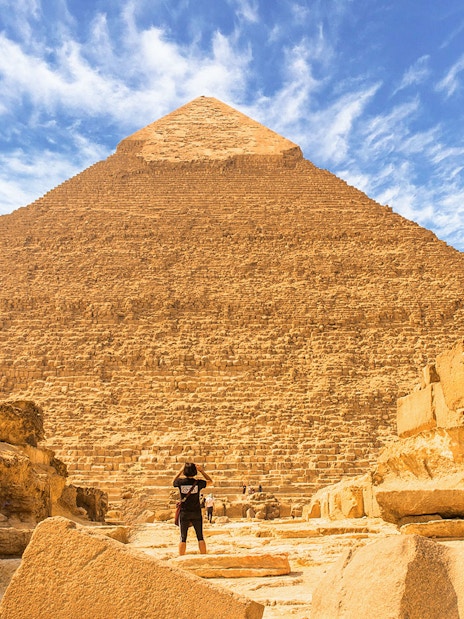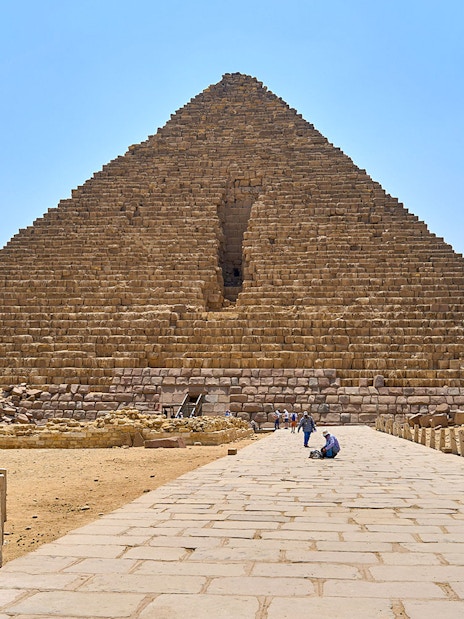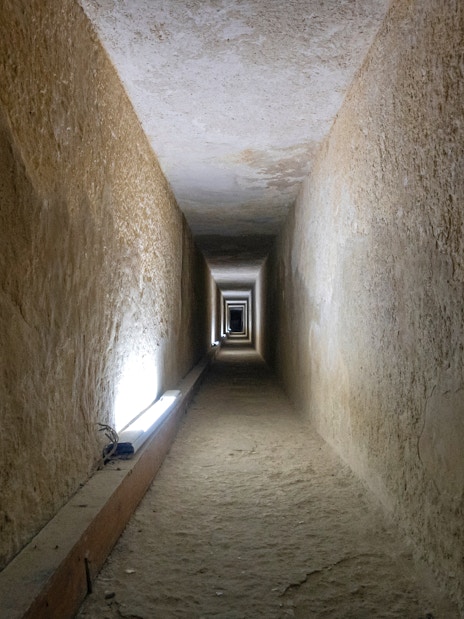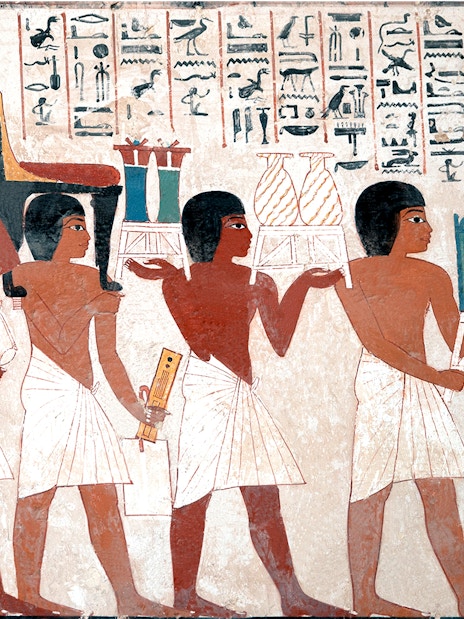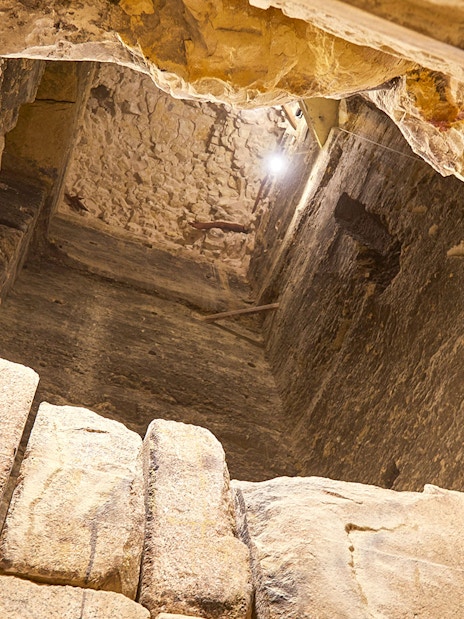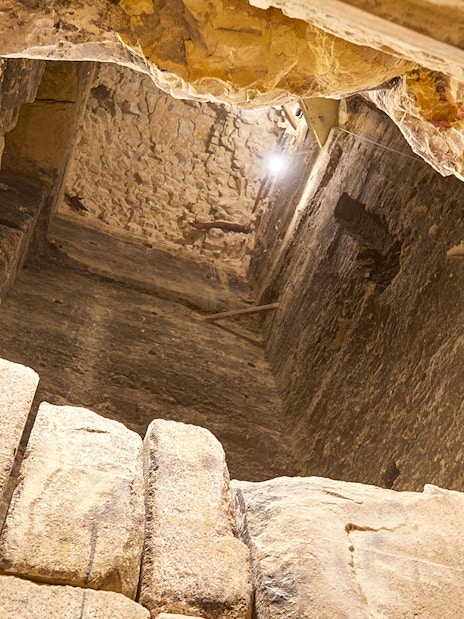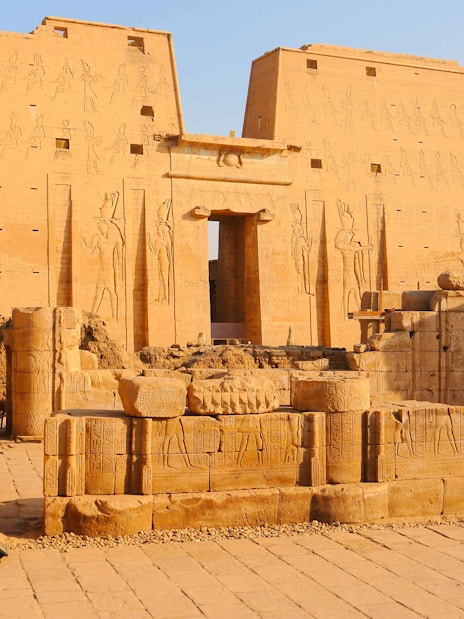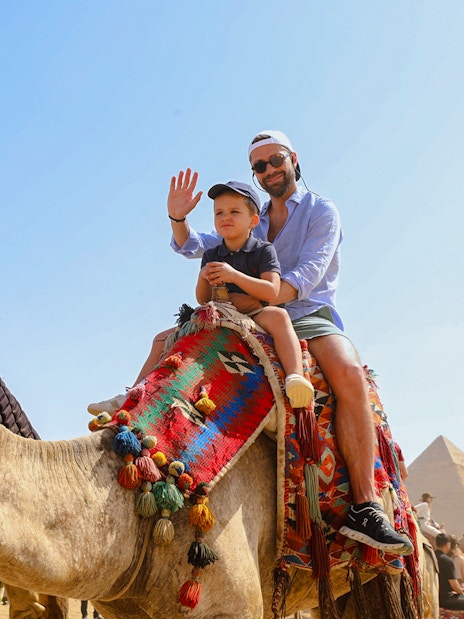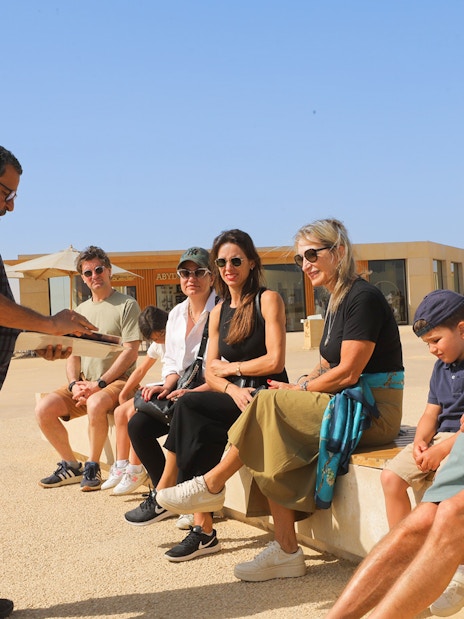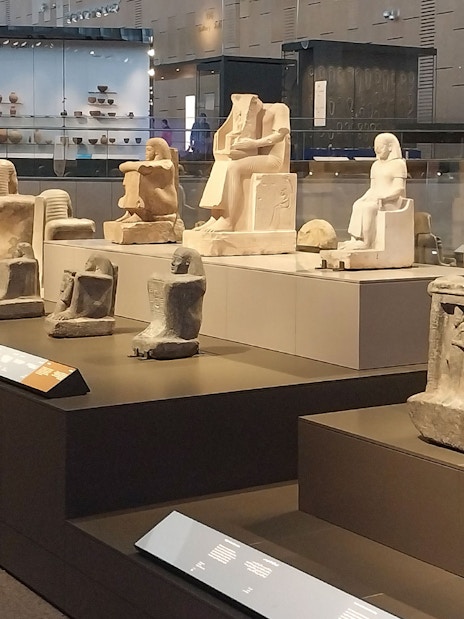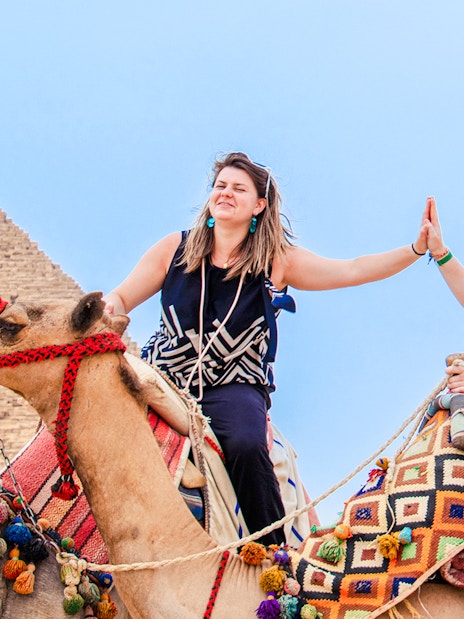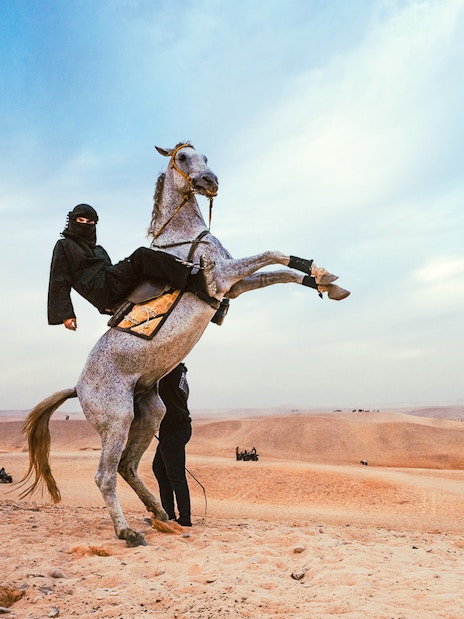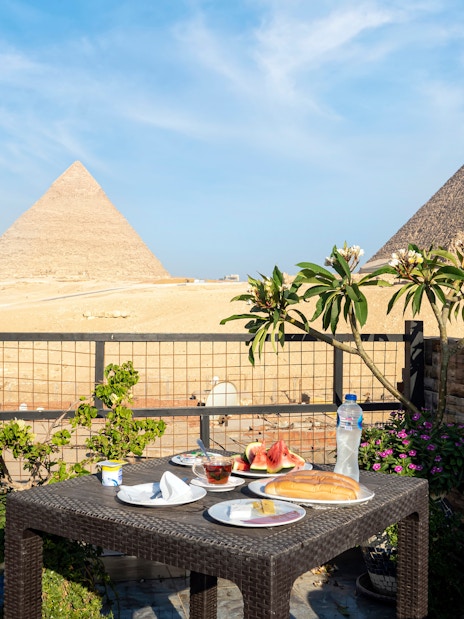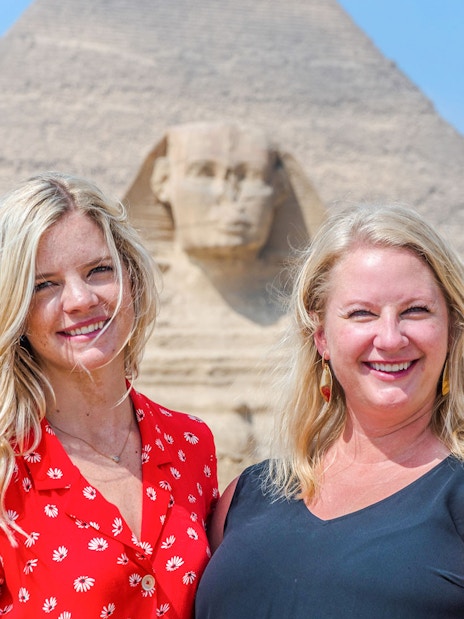All visitors go through a security check at the main gate before entering the complex
What to expect at the Giza Complex

Security & entry

Spacious site
The pyramids, Sphinx, and temples cover a wide area; be prepared for walking, or hire a golf cart or camel.

Pyramid entry access
Separate tickets are required to enter the Great Pyramid, Khafre, or Menkaure. Keep in mind that the interior passages are narrow.

Guided tours
Licensed guides and audio guides are available in multiple languages. Booking ahead helps save time.
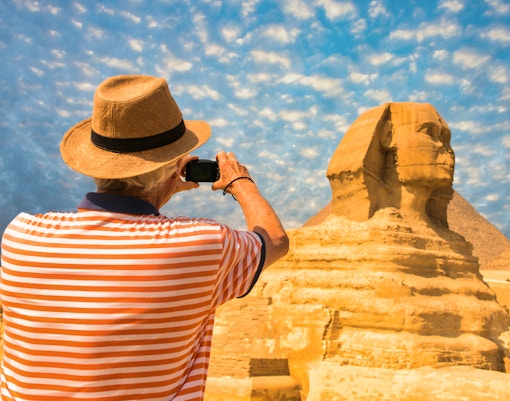
Photo opportunities
Numerous spots for panoramic shots of all three pyramids and close-up views of the Sphinx.
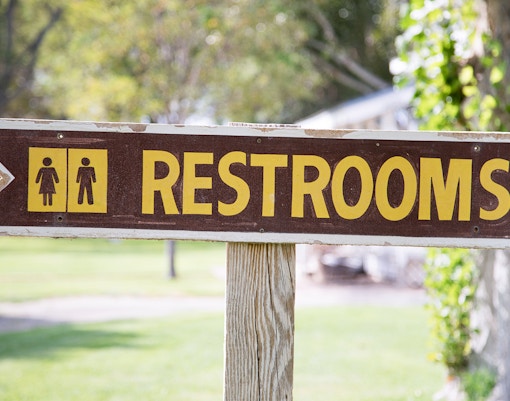
Facilities
Cafés, souvenir kiosks, restrooms, and shaded areas are near the main gates.







